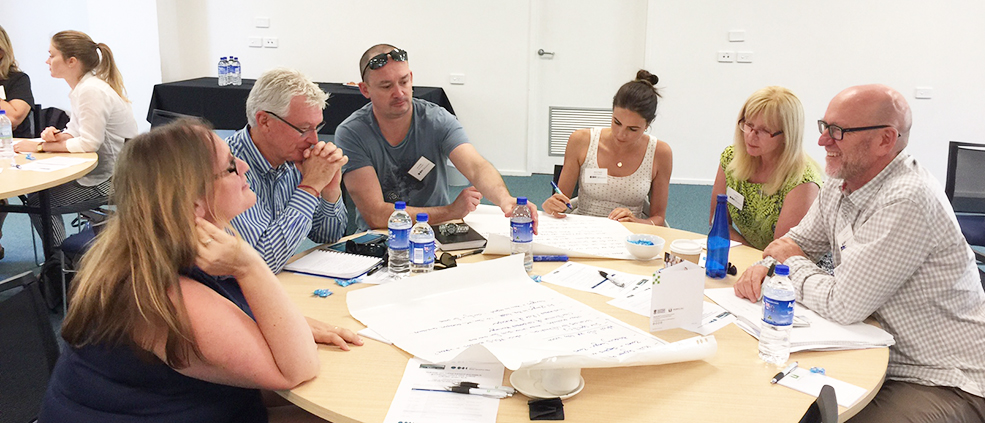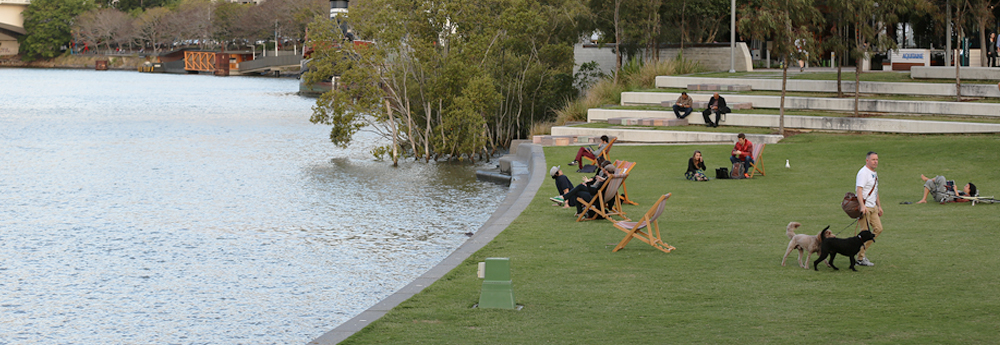A more nuanced picture of urban hydrology opens doors for honing water sensitive urban design
Picture raingardens sprouting with plant life, constructed wetlands enjoyed by joggers and families, and vegetated swales that add greenery to the sides of roads. All of these elements bring aesthetic beauty to the landscape of a city. But by boosting its ability to absorb and filter stormflows, they are also multifunctional elements of water sensitive urban design (WSUD): the increasingly visible principle that underlies a Water Sensitive City.
A core part of the Water Sensitive City approach is the effective handling of stormwater. As well as an underused source of water, stormwater has traditionally been a problem in urban areas because roads and paved surfaces are hard and impervious, blocking the uptake and filtering of water that plants and soils would otherwise perform. Water rapidly runs off such surfaces to cause both the unwanted flooding of creeks and rivers, and the damaging pollution of those environments – the latter due to stormwater picking up nutrients and urban contaminants as it travels along city streets and through drains and pipes. This “urban runoff” effect delivers increased nutrients to receiving rivers and bays, which can cause excess algal growth, poor water quality, and fish kills.
In that context, WSUD strategies can powerfully mitigate the harmful effects of urban runoff by reintroducing into an urban landscape the capacity to better absorb and filter water. At the same time, developers, governments, and water managers looking for the most effective design principles in urban landscapes continue to focus on optimising the efficacy of individual interventions, whether that be raingardens, wetlands, or the like.
That focus raises a number of precise questions. How are water and nutrients transported to groundwater and other destinations? In places where groundwater and surface waters interact, how does urbanisation affect hydrology? And what are the implications for nutrient cycling?
In response to such needs, emerging research by the Cooperative Research Centre for Water Sensitive Cities (CRCWSC)’s Project B2.4 (Hydrology and nutrient transport processes in groundwater/surface water systems) is revealing that the overall picture of a city’s hydrology is more complex than first thought. In particular, work by Professor Carolyn Oldham and Dr Carlos Ocampo at the CRC for Water Sensitive Cities has focused over the last several years on the interactions between groundwater and surface water, the implications for overall urban hydrology, and ultimately, the effectiveness of WSUD.
“Beyond [the simpler model of] urban runoff, issues with urban hydrology also arise because there are complex interactions between stormwater pipes, utilities infrastructure, groundwater, surface water, and the waters needed to sustain ephemeral waterways and wetlands,” Carolyn explains. Mimicking some natural systems, such as permeable limestone, those complex drainage patterns yield a phenomenon known as “urban karst”: a concept that has developed in places including the U.S., China, and Europe, and is now being introduced into the Australian context.
The concept describes the process whereby urban development fundamentally alters subsurface hydrology. Not only does water travel faster under this scenario, through preferential flow pathways created by drains and pipes; but the changed environmental conditions can increase oxygen concentrations in the subsurface environment. In turn, that affects nutrient cycling because anoxic conditions – a low oxygen environment –are required for optimal nutrient removal.

Factoring urban karst into management
So amidst a diversity of urban settings, what does this mean for WSUD managers and planners? “Cities are built in diverse natural settings,” Carolyn says, “so we need to tailor our WSUD approaches to better accommodate the hydrology of different places.”
With the permeable sandy environments of Western Australia’s Swan Coastal Plain as a backdrop, the team has investigated how WSUD performs in areas with shallow, often seasonal groundwater, particularly where groundwater dependent ecosystems are common. In these areas, understanding where water comes from – and where it goes – is essential but complicated. But the researchers have generated new insights by calculating water balances across a range of the infrastructure elements used in urban stormwater management. The findings? For one thing, don’t assume that so-called “impervious” surfaces are wholly impenetrable by water: the testing found that infiltration of rainfall into underlying soils was still occurring in areas usually assumed to be impervious. “That meant that groundwater was recharging and moving faster than previously assumed,” says Carolyn.
Another important discovery is that the performance of WSUD elements in treating nutrient loads is highly variable in both the short and long term, with dissolved oxygen levels having a major effect. Not only are these sandy soils very poor at retaining nutrients, but “the preferential flow pathways continually injected oxygen into systems that ideally should be anoxic for nutrient removal,” details Carlos. “The levels matter.”

Translating new knowledge into new ways
Outputs of the research have included a guide for urban water monitoring in areas with shallow groundwater. Included is a step-by-step methodology for developing conceptual models and measuring water balances for WSUD elements impacted by groundwater. But since the application of this new knowledge is a central focus of Project B2.4, in January, the researchers ran the second of a series of practitioner knowledge transfer workshops in Western Australia.
Attended by professionals including policy makers, river and wetland managers, local government, and industry, the November 2016 event was an opportunity to share key findings on urban karst, and to engage with the local water community to elicit perspectives and discussion on how the new insights will influence future urban development.
Importantly, the research recommends designing stormwater treatment systems that direct storm flows into the subsurface environment as much as possible (while maintaining flood protection) to create better conditions for nutrient removal; and considering a catchment-scale WSUD treatment train approach that uses alternating surface and subsurface elements. Using such a treatment train approach across the catchment provides a variety of oxygen conditions for optimal pollutant cycling.
In response, participants identified priority actions to ensure the research was immediately useful for urban managers, including:
- Determining recharge and runoff rates for all urban typologies, including those with lower water tables
- Designing systems for optimal treatment effectiveness under a range of hydrogeological conditions and development scales
- Optimising water quality monitoring
- Challenging business as usual development: considering different development construction and catchment-scale solutions.
For managers, improved stormwater management in shallow groundwater environments requires establishing water and nutrient mass balances as part of regular activities. At the workshop, attendees learnt how to cost-effectively track groundwater contribution to wetlands, swales, and raingardens, and to separate a hydrograph to quantify the relative contributions of stormwater and groundwater sources.
Both the research findings and the valuable workshop insights will help to guide alternative approaches to urban development in shallow groundwater environments, particularly in areas with sensitive groundwater dependent ecosystems. These systems are common around Australia and the world, and the sandy soils of the Swan Coastal Plain provide an ideal setting for developing our understanding of surface water–groundwater interactions and how they impact nutrient removal. And with research gains from Project B2.4 informing international knowledge of urban karst and its consequences, the team will also be assessing their findings for application in other urban settings – with Melbourne, Brisbane, and beyond on the horizon.
Krystina Mossop for the Mind Your Way team